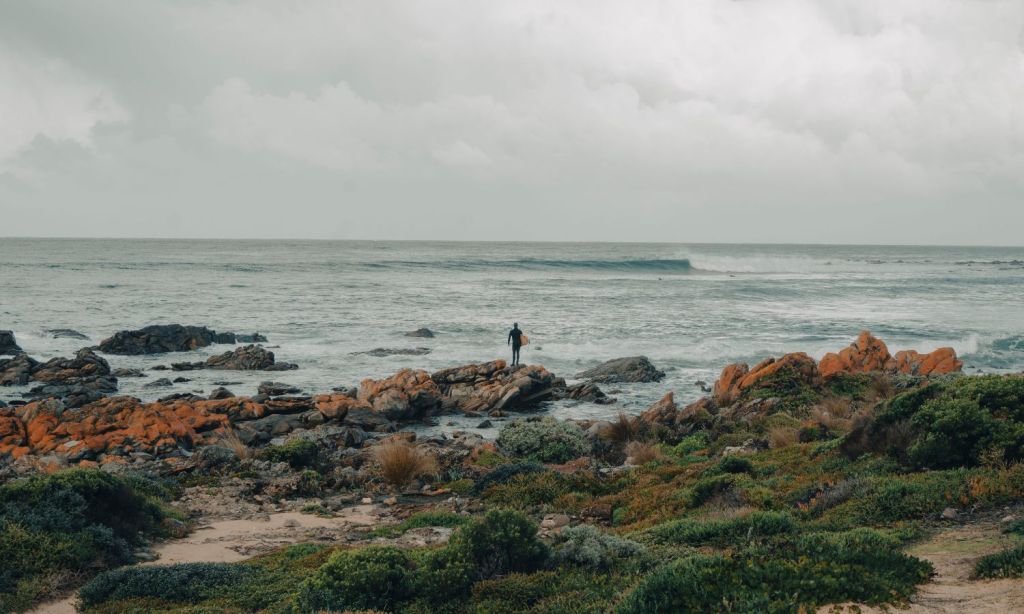Welcome to Where To Next?—a column by our intrepid globetrotting travel writer, Natasha Bazika. Her insatiable curiosity takes her to lesser-known destinations, away from tourist hotspots, and into the heart of diverse cultures and communities. She invites you to be a virtual companion on an exhilarating expedition, venturing beyond the beaten path.
A unique tapestry of natural beauty unfolds as the temperature drops; a gentle hush blankets the land. Kangaroos hop amidst misty hills. Crackling fireplaces and steaming mugs of local wine invite relaxation and contemplation. Bounded by the peaceful stillness, wildlife flourishes. This is Kangaroo Island in winter.
Kangaroo Island, the third-largest island in Australia, spans a similar size to Bali but hosts a population of less than 5,000 residents. It’s renowned for its abundant wildlife and pristine, unspoiled beaches, making it an attractive destination for summer vacations. However, during winter, the tourist influx dwindles, allowing you to have the island all to yourself, as I discovered on my recent trip to the island that was just named one of the New York Times’s top 10 travel destinations for 2023.
Adventure
My KI — as the locals call it — adventure starts with an eco-pod undeniably perched atop the island itself. Nestled on a hill, cloaked in green and gold tussock, my Wander pod, Columba, commands a view of the waves crashing on Snelling Beach and stretches out towards the boundless expanse of the Indian Ocean.
I’m perfectly positioned for Southern Right Whale viewing, another perk of visiting during the cooler months. Surrendering to the cool embrace of the air, I sink into my open-air stone bath, allowing the wind to peel away the layers of my city-induced chaos — a connection to the island has already taken root.
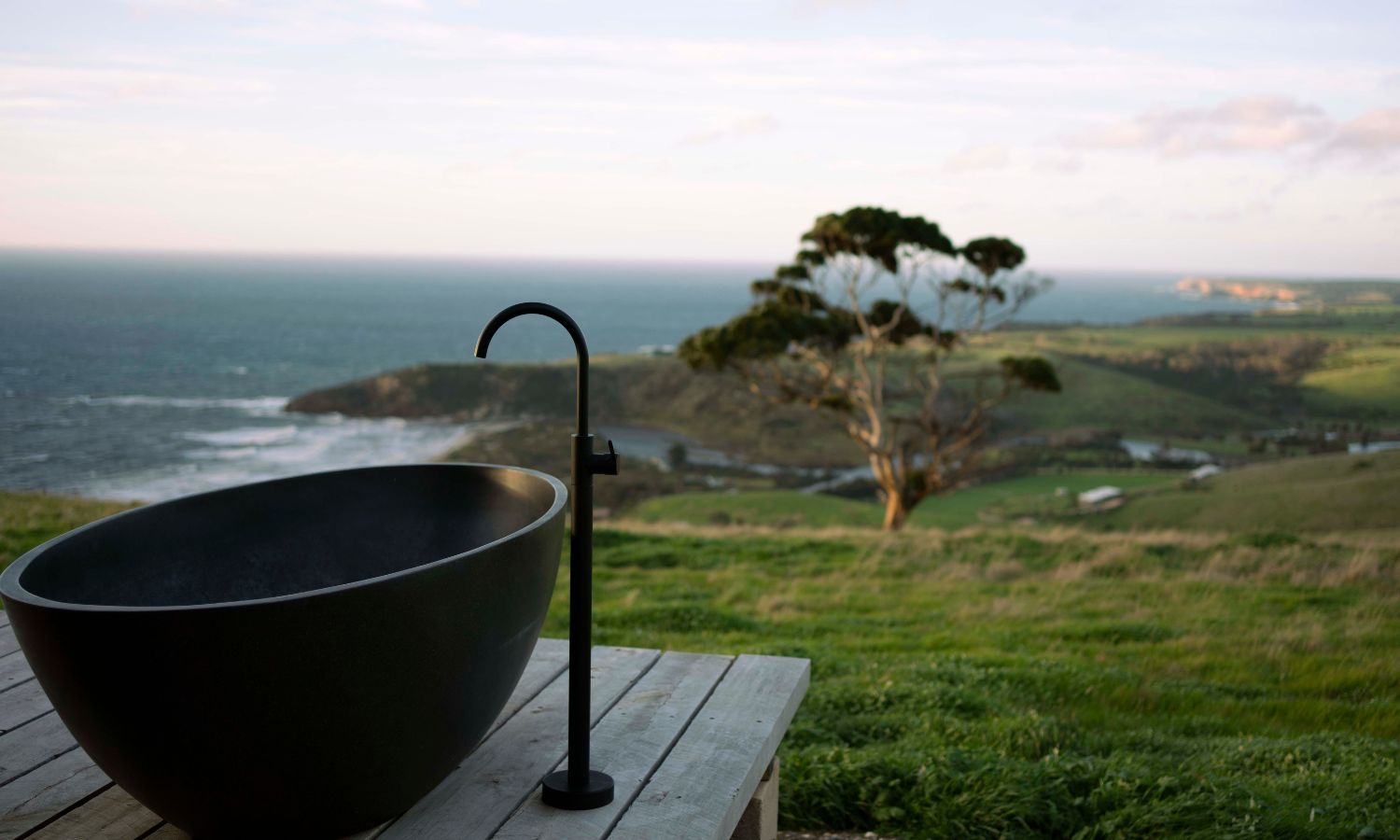
In the morning, I make breakfast and watch the sun cast bars of gold and pink over the island. I promptly get ready to rendezvous with my guide, Craig Wickham, from Exceptional Kangaroo Island, a true luminary of Kangaroo Island.
Driving down the windy road I drove up the previous day, Craig directs my attention to Middle River, which snakes through the heart of the island. I’ve come to realise this island is quite literal in its labelling.
“See that river over there,” he says. “Most people don’t know, but there’s a whale buried there.” He continues to recall a story of when he was a young boy and a whale washed up on shore, already half-eaten by the sea’s predators. The community rallied together, deploying excavators to bury it.
Craig is a living encyclopedia of Kangaroo Island’s lore. He lists fascinating insights revealing the island’s resilient koalas that boast greater resistance to koala retrovirus compared to their mainland counterparts and highlights the emergence of a garlic farm that bloomed from the ashes of the devastating bushfires which scorched nearly half of the island in 2020.
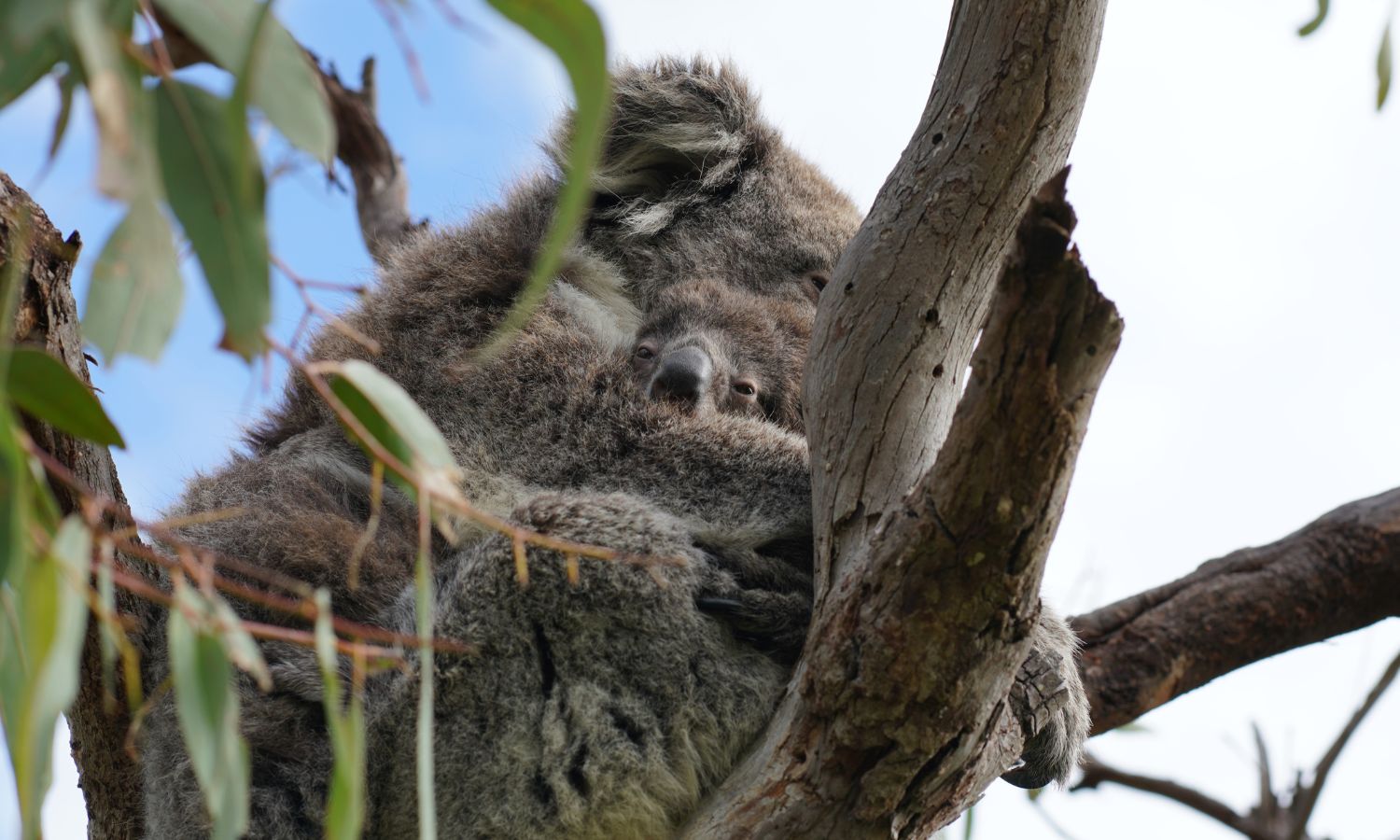
After a brief 15-minute drive, Craig steers the vehicle to the side of a dirt road, eager to share a sight that fills the dreams of many foreigners: a trio of koalas peacefully slumbering in the treetops. Opposite the koalas is a patch of land claimed by the fires, although you couldn’t tell except for the blackened tree stems.
“The fire was devastating; it destroyed homes, grazing land, crops, and businesses,” says Craig as we step deeper into the forest. “But, it has also done wonders for vegetation here, acting as a reset button, germinating species and introducing new growth in areas we haven’t seen before.”
On reflection, Craig acknowledges that the destructive fire brought an unexpected silver lining: heightened attention to the island. With astonishment and gratitude, he remarks, “We’ve never seen such a surge in visitors before.”
The influx of tourists, arriving by both plane and ferry, has shone a spotlight on Kangaroo Island, elevating its status from a hidden gem to a sought-after travel destination. Craig proudly asserts, “We’ve always had the beaches, the food, and wine, but I’m glad the rest of the world now knows it too.”
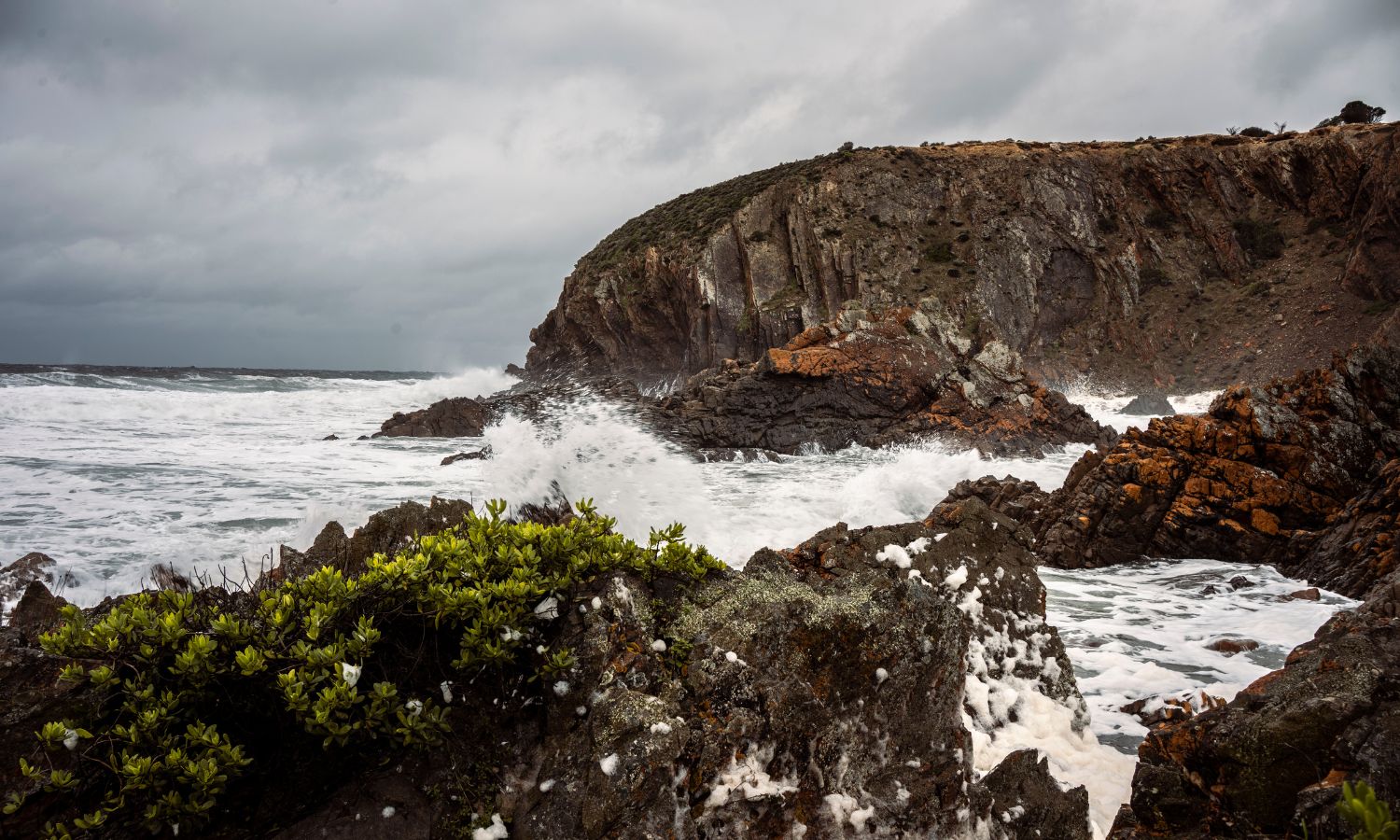
The Local’s Secret
One of the undeniable advantages of exploring the island in the company of a local guide is the privilege of uncovering hidden gems. Craig chauffeurs us to a place of both mystery and natural splendour — King George Beach. Stretching only 220 metres across a bank of white sand, the powerful dance between the waves and the rugged rocks served as a poignant reminder that this beach is not suitable for swimming.
Waves, averaging a meter in height, crash against the shoreline, shaping a wide bar spanning from 50 to occasionally 100 meters, often accompanied by a current near the eastern rocks. Although bordered by jagged rock platforms and cliffs, rock fishing is a popular activity here. I won’t be casting a line anytime soon, but it’s a beautifully terrifying display of oceanic might.
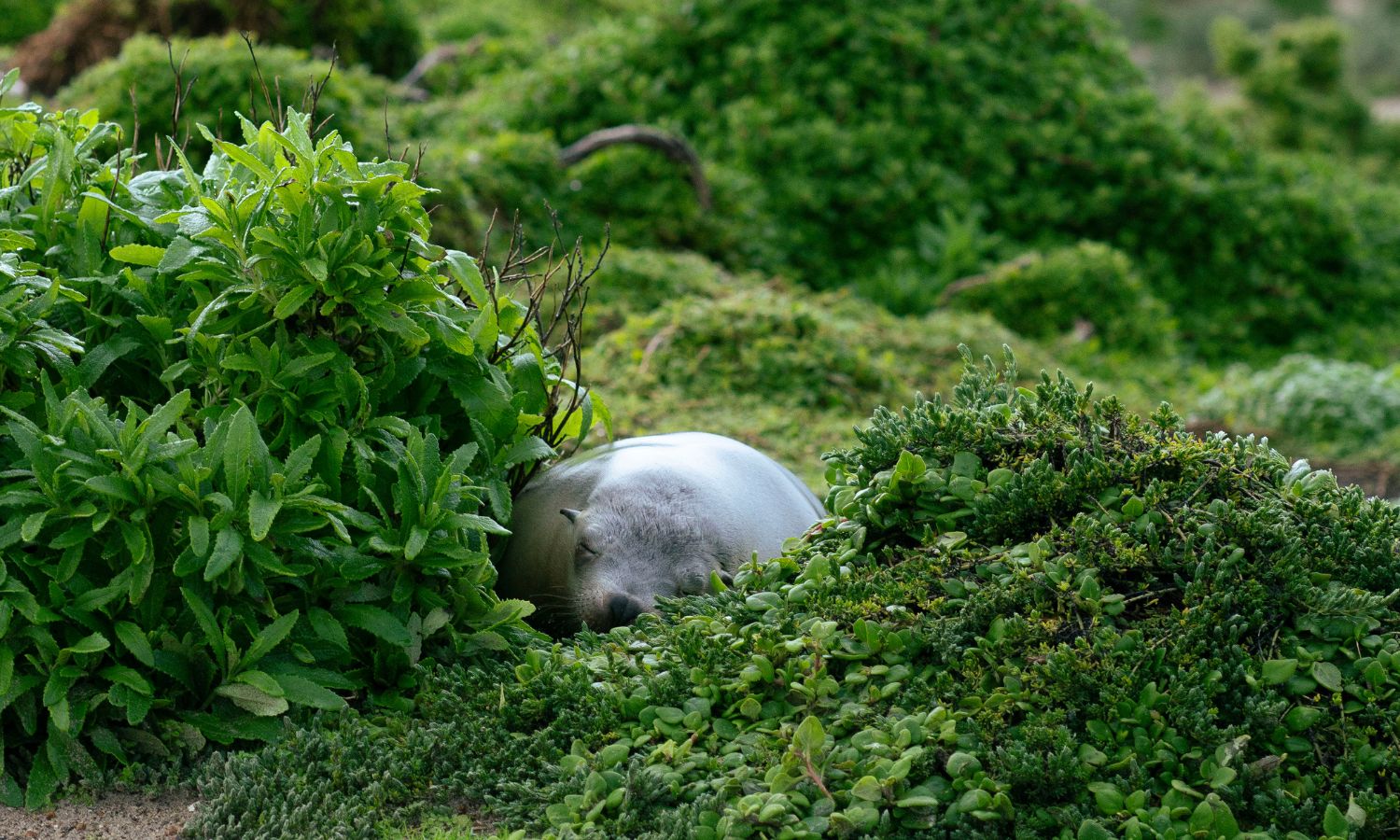
Revealing yet another local gem, Craig whisks me away to a place that became my favourite on the island — Wheaton’s Beach, a hidden sanctuary a few metres up from the more renowned Wrecker’s Beach. The ambience reveals its local charm. A procession of Range Rovers lines the car park while sun-kissed surfers with lustrous blonde locks busily prepare themselves, zipping wetsuits and waxing boards. The sense of camaraderie is palpable, and soon enough, I feel embraced as a part of the community.
Regrettably, I had not brought my surfboard — a fortunate circumstance, as I later discovered the beach earned its colloquial moniker, Sewer’s Beach, for a good reason. “The waves here will make you s**t yourself, giggles everyone.
Climbing the ridge en route to a clandestine seal viewing spot, I spotted the surfers clambering over rocks and paddling out through a rip. This relentless force propells them toward a break, crashing upon the reef. It was no Bondi beach swell. This was for serious surfers.
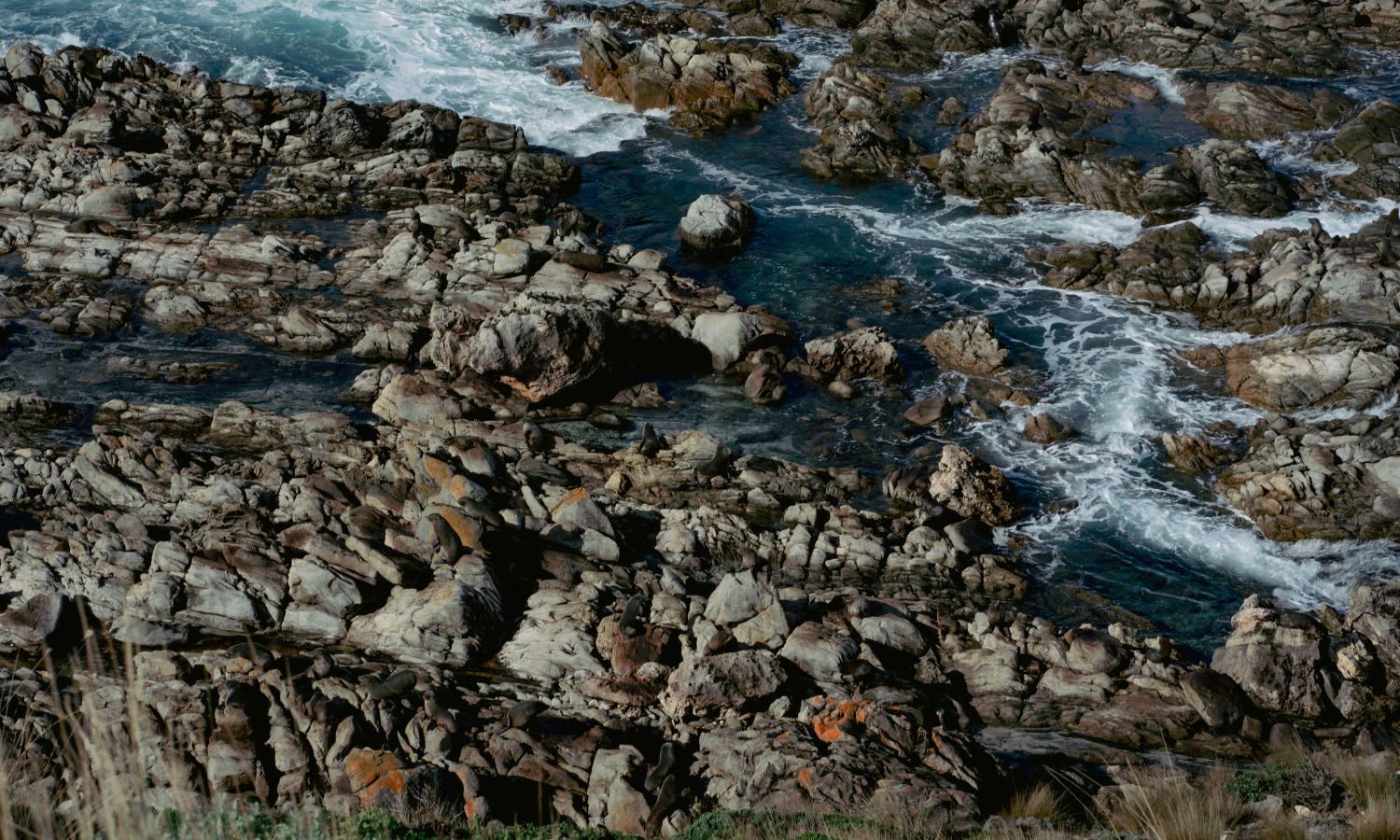
We continue along the Cape Gantheaume cliff trail, an epic journey that typically spans two days one way. However, our objective was a shorter stroll, focusing on the highlights.
Guiding us with his extensive knowledge of vegetation, Craig intermittently calls out the names of the plants that brush against us. It seems there was no end to his expertise, as he also possesses a keen ear for bird songs.
As we reach a particular point along the cliff, we navigate through the coastal scrub, delicately tracing the edge of the precipice, where an isolated beach dotted with New Zealand fur seals was spotted below.
The more you look, the more seals will materialise. Some glide through the water, playfully interacting with the waves that lash the rocks. Others found solace on sandy shores and sun-soaked rocks. The scene unfolds untouched by human intervention—a testament to the beauty of nature.
Craig mentions that 20 kilometres to our right lay Seal Bay, the tourist attraction we had visited the previous day, where we observed seals from a boardwalk. I turned to him and uttered, “This is better.”
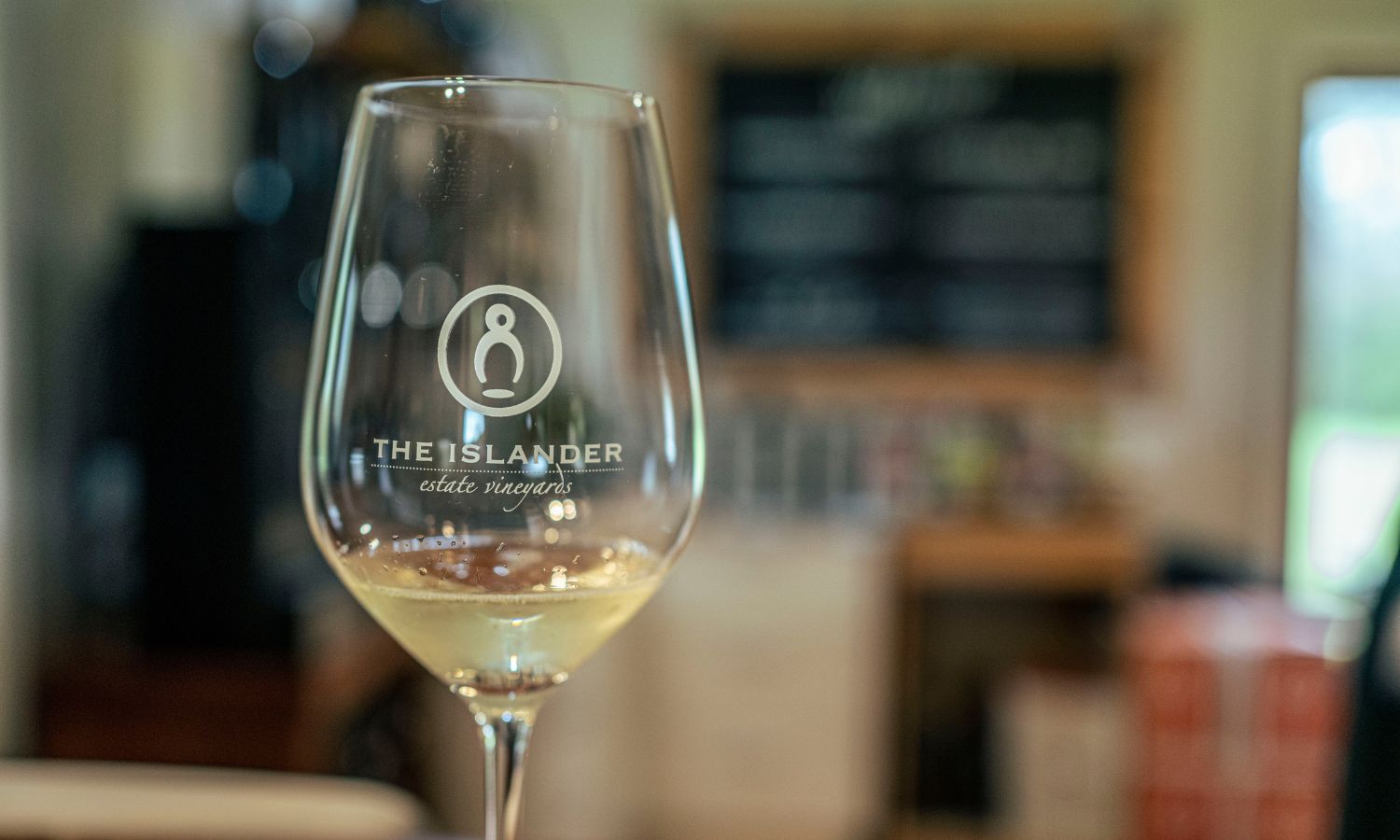
Food and Wine
“We’re pretty self-sufficient on the island,” says Craig, a gardener himself. Thanks to the fertile lands and abundant waters, KI is a cornucopia of culinary delights, from olives to wine and honey.
Our first food and wine stop takes us to The Islander Estate Vineyards, where no surprise, Craig knows the owners and the staff. Co-owner and esteemed winemaker Jacques Lurton boasts a lineage deeply rooted in winemaking from Bordeaux and a globetrotting journey that led him to various winemaking destinations. Yet, the humble charms of Kangaroo Island captured his heart in a way no other place could.
Here, he combines the heritage and finesse of Bordeaux with Australia’s newest and most remote wine region, crafting cool-climate wines that are restrained, elegant, and fresh. The cellar door, easily accessible from town, is a cosy place to sit through a tasting of the estate’s premium range — even in the rain.
Another island staple is honey. Craig informs me of the unique presence of the world’s sole pure strain of Ligurian Bees, a species originally from Italy. Isolated on KI, these bees have been fortunate to evade the prevalent diseases afflicting their mainland counterparts.
A visit to Clifford’s Honey Farm is the perfect excuse for a honey tasting. Although I quickly realise the honey ice cream is the main event here.
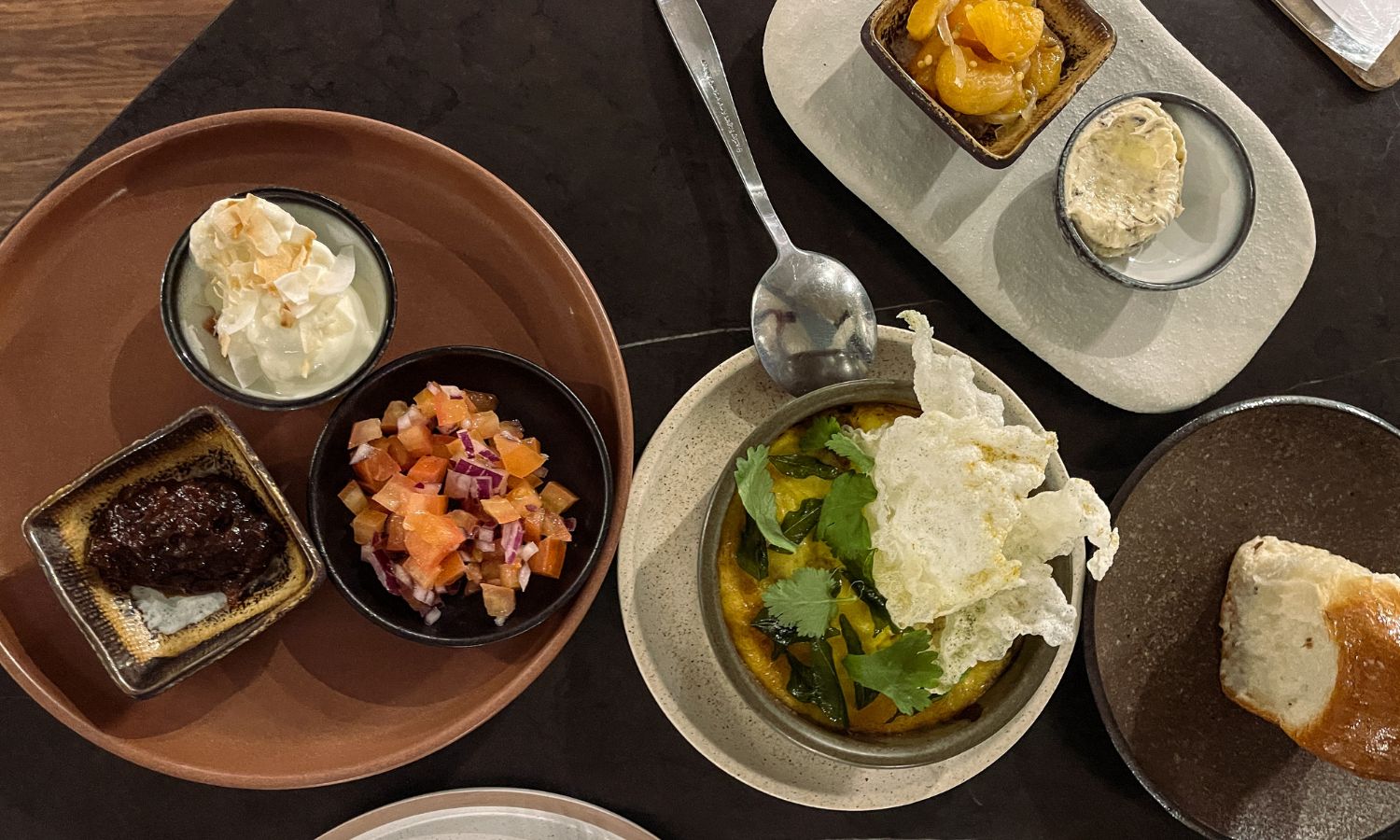
When it comes to restaurants, there are endless options on the island, depending on your location, but tonight I’m In Kingscote, the main town. There’s only one place you need to know about here—The Odd Plate. During peak season, the restaurant sticks to an a la carte menu, with dishes spanning from Italy to Japan. Yet, during the quieter off-season, as I had the pleasure of experiencing, the establishment takes delight in crafting themed menus that entice the local community.
My visit coincides with South African week — the restaurant owner’s origins — and as I savour every act of the four-course menu, an insatiable wanderlust for Johannesburg begins to stir within me. Each plate emerging from the kitchen is a vibrant masterpiece, from the Biltong carpaccio to the rich Cape Malay Fish Bobotie, accompanied by tiny ramekins filled with peach chutney, tomato salsa, and banana raita. For dessert, a Malva pudding provides a subtly sweet conclusion.
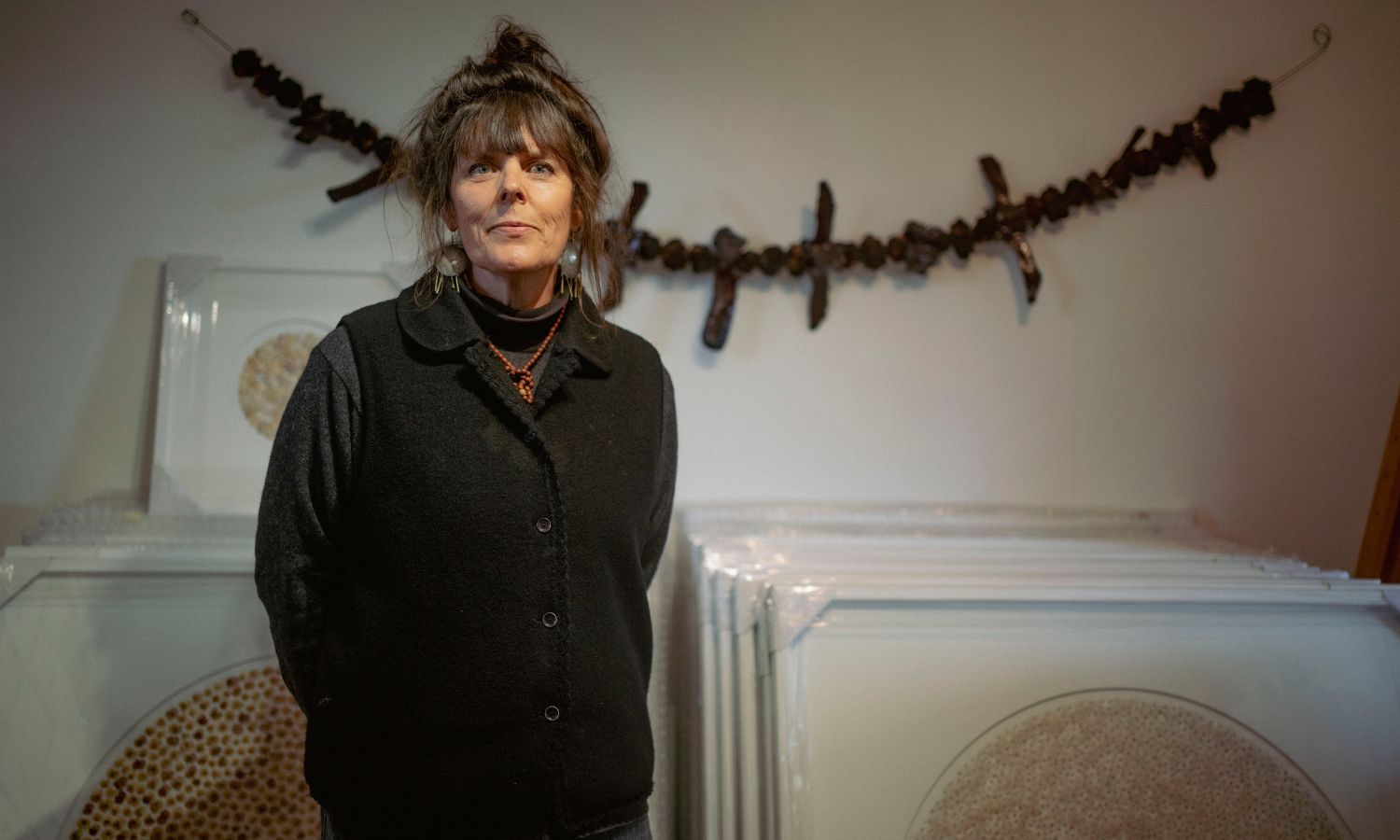
Local Art
Unbeknownst to many, Kangaroo Island boasts an impressive artistic community, with approximately 10% of its population actively engaged in artistic pursuits. My introduction to the art scene sparked when I first encountered an artwork by Janine Mackintosh at The Islander Estate Vineyards. The mandala of meticulously arranged eucalyptus leaves catches my eye. “Do you want to visit the artist?” he says.
Janine welcomes us onto her property — a quiet, woodsy, nature-filled patch of land that most tourists would drive past without noticing. We interrupt her, gluing sea shells onto a canvas.
“This is for the new Southern Ocean Lodge,” she says before ushering me into the next room where the remaining 40 works were stacked up against each other. Janine’s masterpieces are botanical assemblages using natural materials collected from her 800 acres of woodlands, heathlands, and wetlands.
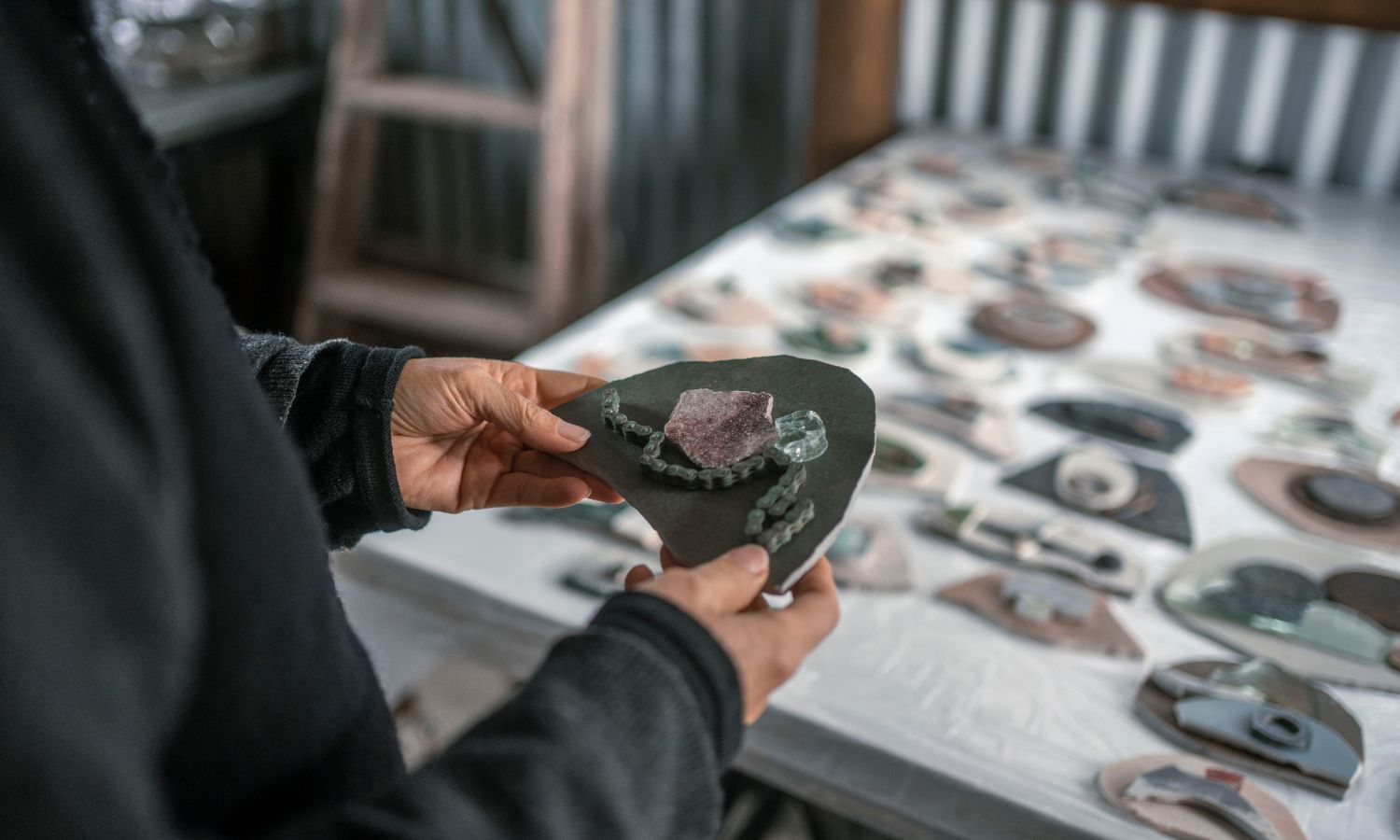
“The diverse shapes, colours, and textures of each plant truly enchant me,” Janine reveals with genuine admiration. She guides us to a modest tin shed, an unassuming sanctuary where a collection of rusted, burned, and fragmented remnants from the former Southern Ocean Lodge find their resting place — a solemn graveyard of forgotten memories.
Unlabeled boxes hold fragments of glass, room numbers, and kitchen equipment, each a part of a story that Janine could effortlessly unravel. She’s resurrecting select elements to be displayed in the new lodge along with her 40 canvas pieces.
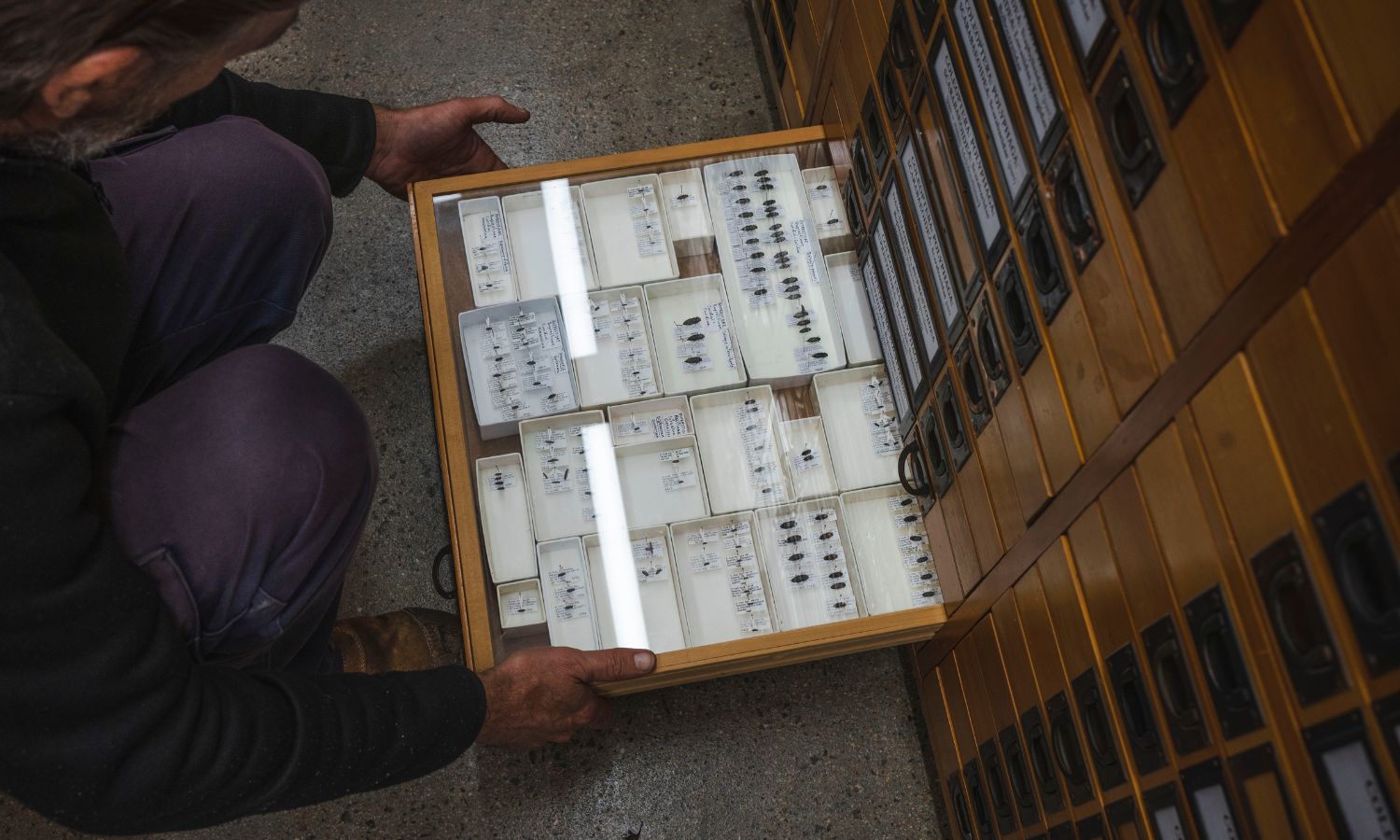
Janine’s husband, Richard Glatz, emerges from his studio shortly after. He asks if I have any interest in insects. Naturally, I accept his invitation. Stepping into a narrow yet towering room that harbours the fresh scent of recent construction, I was drawn to the orderly rows of drawers on the walls — a tapestry of entomological knowledge.
Each drawer cradles a cluster of pinned insects, each labelled with their scientific names, from flies to beetles and even the most vibrant butterflies I’ve ever seen, hailing from South Africa. It dawns on me that I was surrounded by only a fraction of his impressive assemblage — a collection that ranks among the largest on the island and, indeed, one of the most extensive in Australia.
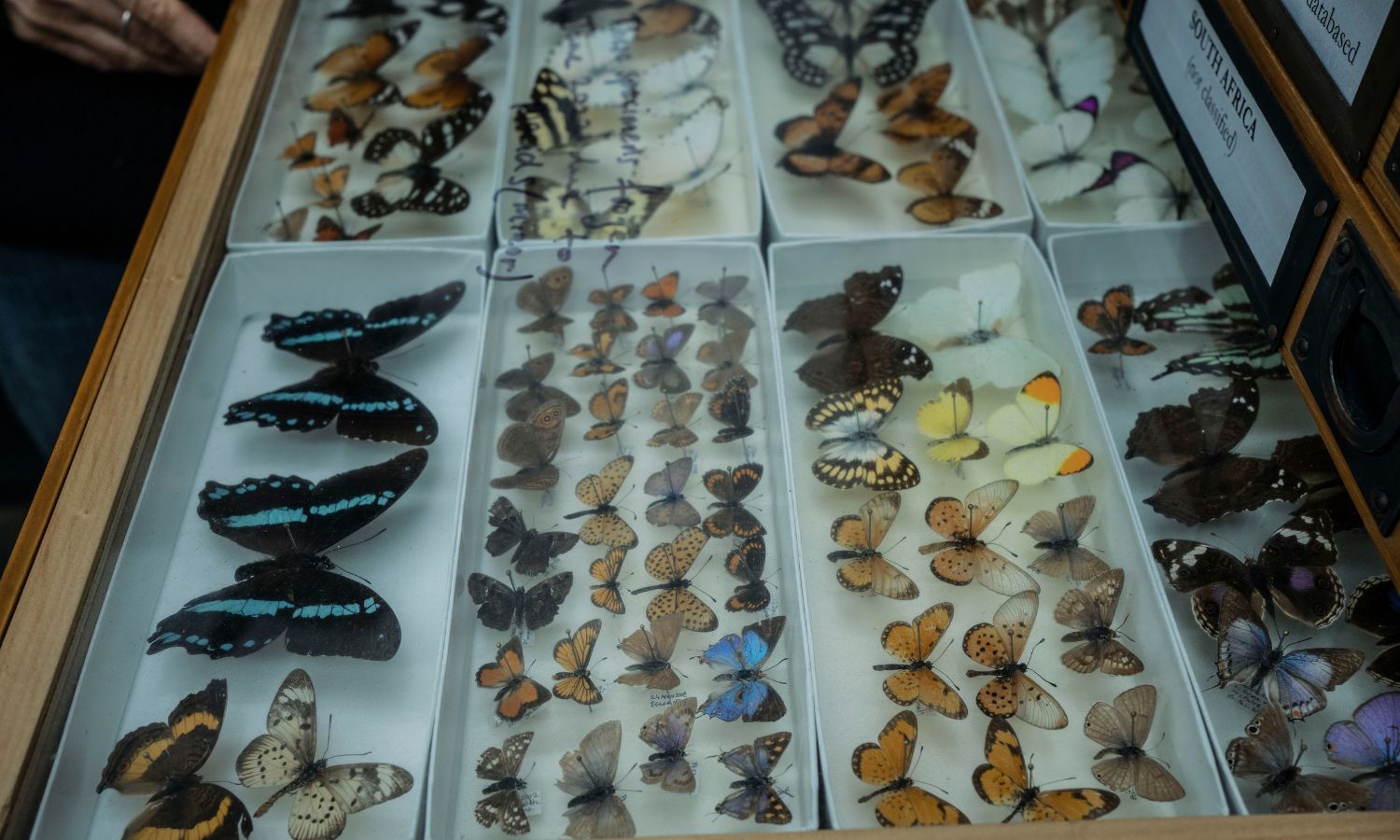
As I stood there, immersed in the presence of two remarkable individuals, an overwhelming sense of warmth and belonging swept over me as if Kangaroo Island had wrapped me in its embrace. It is the kind of place where one enters as a stranger but departs as a cherished friend, forever touched by the island’s ability to forge connections.
Unmissables
For breakfast: Cactus
For lunch: Emu Bay Lavender Farm (Get the lavender scones!)
For dinner: The Odd Plate (You can’t go wrong with any choice here)
For gin: Kangaroo Island Spirits
For wine: The Islander Estate and Bay of Shoals (incredible views)
Related: Embrace Minimalist Bliss With These South Australian Tiny House Escapes
Related: 7 Road Trips That Let You See South Australia’s Natural Wonders
Read more stories from The Latch and subscribe to our email newsletter.


